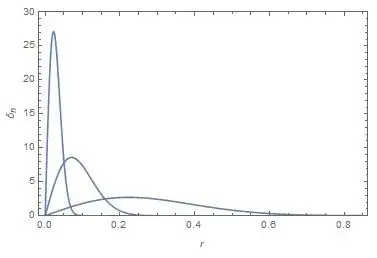An infinitely long wire carries a constant electric current $I$ along the $z$ axis. Thus, the current density $\mathbf{j}$ of the wire is given by, in cartesian coordinates:
$$\mathbf{j}(\mathbf{r})=I\delta(x)\delta(y)\mathbf{\hat{z}}$$
I am required to calculate the following integral:
$$\mathcal{I}=\iint_S\mathbf{j}(\mathbf{r})\cdot\mathbf{\hat{z}}\ \text{d}S$$
Where $S$ is a circle with radius $R>0$ on the $[XY]$ plane. Calculating $\mathcal{I}$ in cartesian coordinates gives:
$$\mathcal{I}_{\text{cartesian}}=I\int_{-R}^{+R}\int_{-\sqrt{R^2-x^2}}^{+\sqrt{R^2-x^2}}\delta(x)\delta(y)\ \text{d}y\text{d}x\underbrace{=}_{0\in(-\sqrt{R^2-x^2},+\sqrt{R^2-x^2})}I\int_{-R}^{+R}\delta(x)\ \text{d}x\underbrace{=}_{0\in[-R,+R]}I$$
However, when I try to calculate the integral using polar coordinates, where:
$$\delta(x)\delta(y)=\frac{\delta(r)}{2\pi r}$$
I get:
$$\mathcal{I}_{\text{polar}}=I\int_{0}^{2\pi}\int_{0}^{R}\frac{\delta(r)}{2\pi r}\ r\text{d}r\text{d}\theta=I\int_0^R\delta(r)\ \text{d}r$$
Because of course $\mathcal{I}_{\text{cartesian}}=\mathcal{I}_{\text{polar}}$, the integral I got should be equal to $1$, but I don't understand why. From my personal experience, integrals like this, where the zero of the argument of the dirac-delta function is one of the integral limits, are not well-defined. Why then in this case it is equal to $1$? I suspect my construction of the integral is wrong, but I'm not sure where I was wrong.
Thanks!
